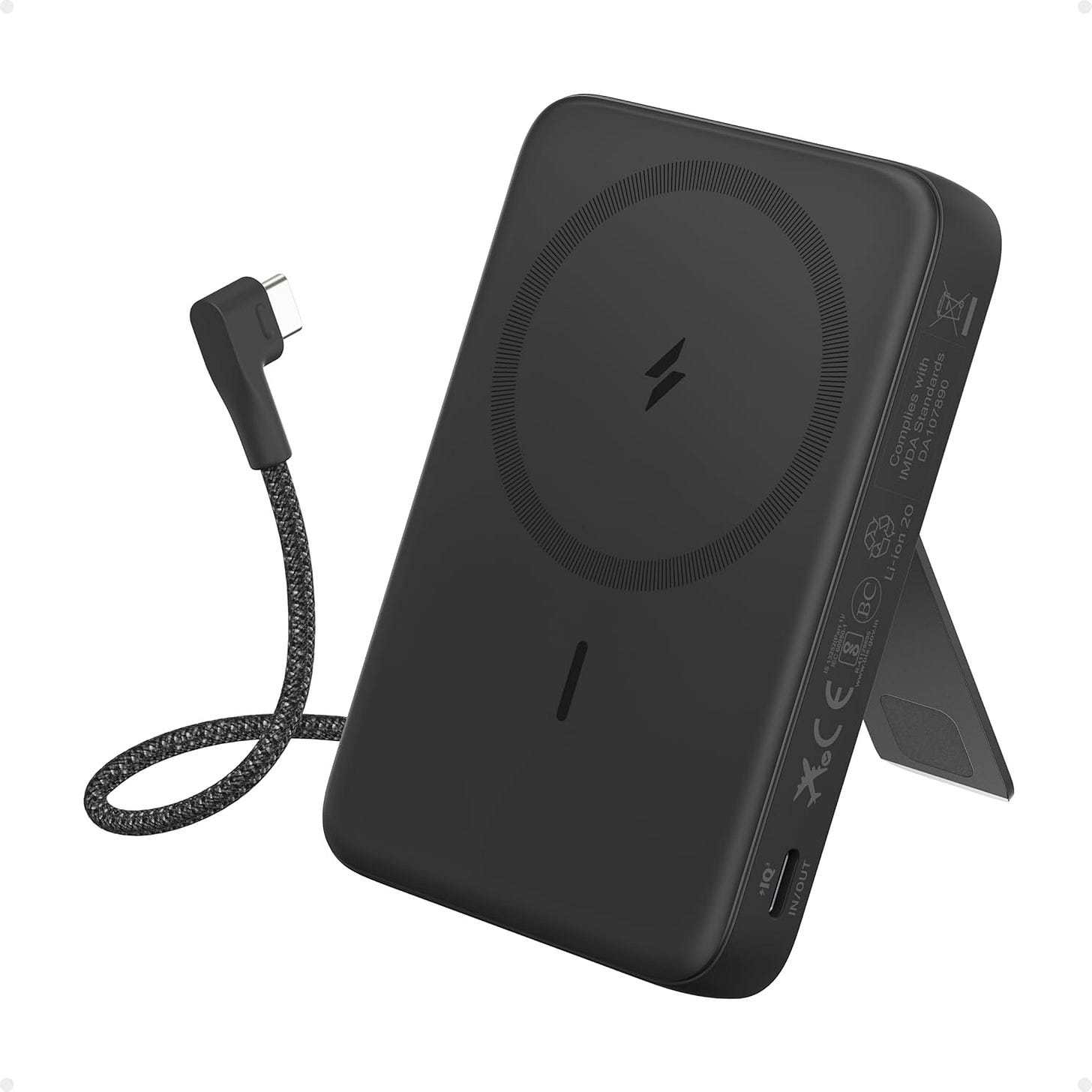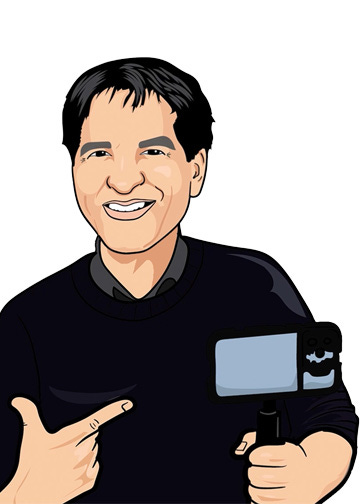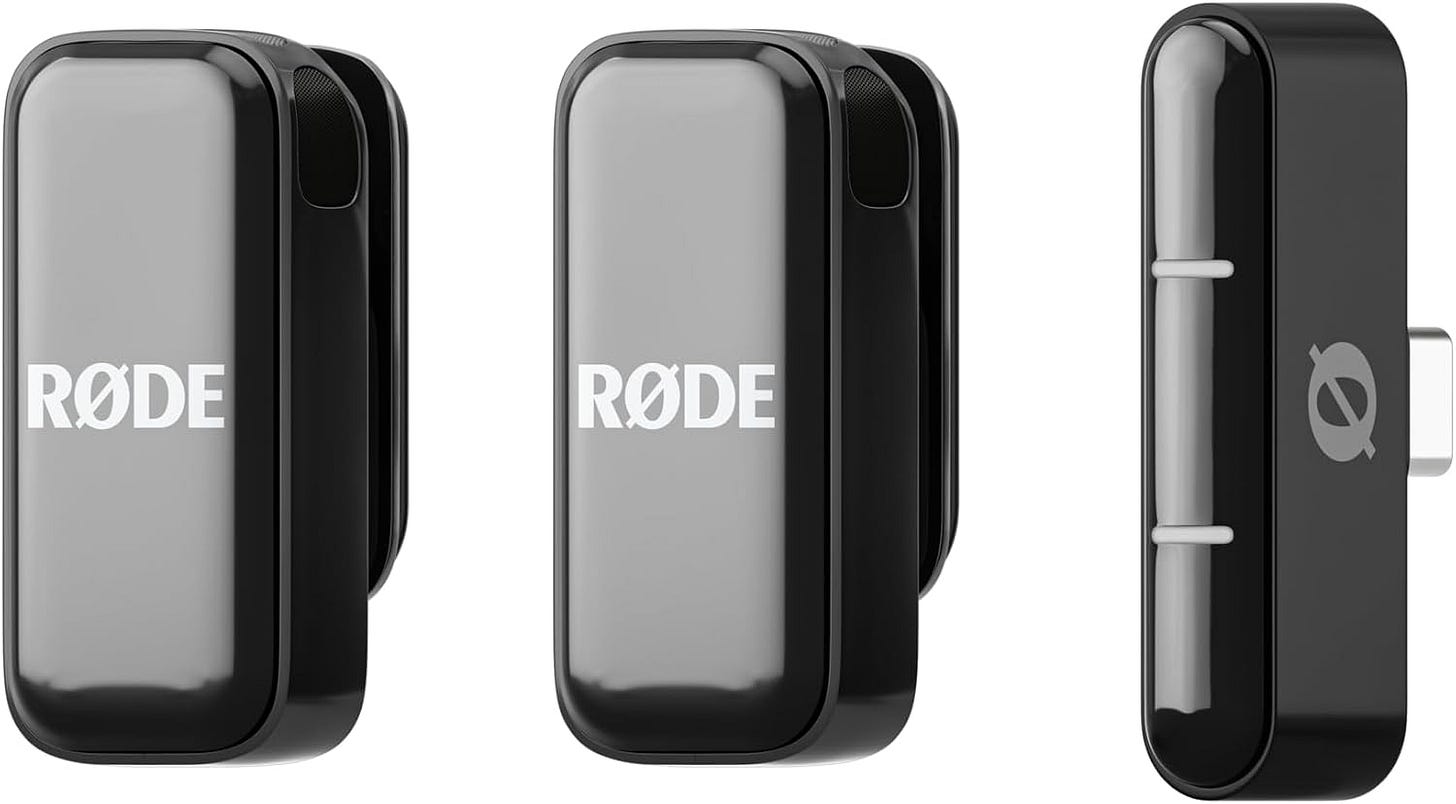11 Great Mobile Photo/Video Accessories: 2025
My latest roster of go-to tools to enhance your imaging.
This week at the KelbyOneLive iPhone Photography Conference, I gave a presentation on the accessories I use to produce a weekly TV show and then some. Many people asked for a follow-up list—so all those K1 viewers—thanks so much for the tremendous response—this is for you—and everyone else who reads the newsletter.
I’ve got 11 of them here, but you don’t need all of them, of course. Feel free to pick and choose. I have, however, listed them in the order of importance. (Ethics note: I’ve included Amazon links, which pays a small commission to me if you buy, but doesn’t add to the cost of your product.)
Portable chargers
When you use a mobile phone as your main camera on a travel photography shoot, you will run out of juice fast. For me, it’s usually by 11 a.m. or noon. Since phones don’t come with removable batteries, what are you going to do?
One option is to carry a second backup phone with you. Another, way more affordable way is to invest in portable battery power banks, to instantly power up and re-charge your phone. For iPhones, I really like the MagSafe ones that fit directly on the back of your phone and charge you back up, sans wires. For Android phones, you can buy an accessory MagSafe case that will connect to these guys. The alternative is a power bank with a built-in cable, but the problem for me is that I’m already using the USB-C slot for other things, as you’ll see when you get to the audio section. This Anker model has the best of both worlds: the built-in cable, if you need it, and it snaps to the back of the phone.
Filmmaking Cage
I use two of them, a Neewer model, which I’m holding in the cartoon above, and this little $35 piece of steel from SmallRig. If you want to connect the phone to a tripod, you need either a smartphone tripod adapter, which generally sell for around $20, or the more versatile, albeit larger, filmmaking Cage. The advantage to the big guys is they have more Cold Shoe slots, in which you can connect lighting, audio and a power bank.
I have two Cages as I shoot on multiple phones. The SmallRig cage is future proof—it will accept newer, bigger phones in the coming years, while the Neewer cage is more snug, will only work with a certain model of phone and connects well to accessory side handles for slightly smoother video pans.
Cloth
Our phone lenses tend to be filthy, as they’re rustling in our pockets and purses and a little microfiber cloth wiped across your lens can provide a night and day difference to your blurry, muddy photos. Glyn Dewis, another speaker at the Kelby conference, told me he uses a $100 PolarPro case to solve this problem—it has a lens cover on it.
Selfie Stick that doubles as a tripod
The no. 1 question I’ve gotten over the past two years: who makes that Selfie Stick you’re always going around with? The answer is Insta360, the same company that makes the wild X series of cameras for 360 productions. It sells for $25 and if you use it with the X cameras, it will be “invisible,” since the software erases it for those productions. And that’s cool.
But when paired with an iPhone and video recording, it smoothes the shot, it enables me to get into places I normally wouldn’t, by extending the arm, makes for better selfies and doubles as a four foot tripod, great for interviews in cafes.
As I showed in my KelbyOne presentation, I did back to back tests with gimbel stabilizers and just an iPhone on a Selfie Stick, and the results were nearly identical.
External microphones
I have been preaching using external microphones for years, as the audio from mobile phones are sub-standard. They’ll help you in a pinch, but they’ll also pick up every sound nearby, and make it hard to hear your speaker talking, unless they’re in a quiet room.
External lavalier microphones have gotten so good over the past years—they’re probably the biggest advancement I’ve seen since I started covering the space twenty years ago.
I’ve long been a fan of Rode microphone lav products, and I have every iteration: the Rode Wireless Go, Go IIs, Wireless Pro, and now, finally, we have the best ones Rode has ever released, the Wireless Micro, with the best price. At last look, Amazon was selling them for just over $130. I paid $400 for the Pro, $300 for the Go IIs and $200 for the original Gos, and the sound is vastly superior on the new ones. Go figure. They connect directly to your USB-C or Lightning charging connector on the phone and then you place the mics on your subject, eliminating the need for wires.
Drone maker DJI also has a set of highly popular microphones for phones and cameras that frankly, more of my colleagues use. They like them because the mics are way smaller, and thus, not as noticeable on screen. Also, because the mics receiver always plugged directly into the phones charging port, wirelessly, something Rode just copied with its Micro product.
DJI has a new version out, the MicMini, ($169) and they’re similar to the Micros, with one extra cool feature. The mics connect to several DJI products, including the beloved Osmo Pocket 3, without having to plug in the receiver.
Tripod
Sure, a mobile phone is all about being mobile, but how do you think I address the camera on video by myself? With my trusty tripod, and I’ve never loved a tripod as much as I do the Peak Design Travel Tripod. It’s expensive, at $399 and $599, but it’s ultra-light, it unpacks quickly, and it fits into a suitcase. I never leave home without it.
Light
I’m all about shooting in the shade during the day for even tones on my face, but when the sun goes down, I need lighting. These little LED lights from Aputure and LumeCube fit into the cold shoe of the Cage or smartphone tripod mounts and add a little kick, for just under $100. I also use the Harlowe Mini, a $299 light that looks like an old Hasselblad camera, and adds about four times the amount of power.
Lenses
For years, when people asked me what I thought of snapping an accessory lens onto an iPhone, my reaction was no. Mobile phones already have multiple lenses on them, a 13mm-120mm spread on Pro models of the iPhone and Galaxy, and no accessory lens would let you go further than that. Until, that is, the new Reeflex series of G lenses were released. The $220 240mm lens is a wow, enabling you to double the throw you get at 5x on the iPhone Pro or top Galaxy phones. The quality is great, and if you’re willing to stretch for another $100, you can get a macro accessory with the Reeflex lens that will get you way closer than even the iPhone or Galaxy macros, without those pesky shadows that appear in daylight macro shots.
Gimbels
I’ve not been a fan of smartphone gimbels to help steady your shot, because they’re bulky, take too much time to set up, and don’t radically improve the shot. I will say that the new Insta360 Flow 2 stabilizer helps address those issues by being easier to set up. But the video doesn’t look that much smoother. However, it also includes some special features like a tracking tool for those of us who do solo videos that’s really cool, a selfie mirror, which is awesome for us solo creators, and even a teleprompter feature. So for those three, I’m willing to drag it around. Plus the price is affordable, at just over $160.
I’ve been using the DJI Osmo series of smartphone gimbels since they were first released, and sorry folks, but not a fan, for the reasons stated. That said, the new model, the Osmo 7, is slightly smaller, and now works hand in hand with the DJI Mics, which solves a huge problem I had in the past. If you attached audio, it would ruin the balance of the phone. No longer. The Osmo 7 is $10 less than the Insta360 Flow 2.
ND/Polarizer Filter
Neutral Density and Polarizer filters have been beloved by photographers for years, as a way of adjusting the light. So you want to blur the background in broad daylight, but the sun is too strong? That’s when you reach for the ND filter. Or the Polarizer to knock out a shiny subject. Both are hard to use on mobile phones in their native apps, because they’re auto apps. But if you reach for manual apps like Halide or the Moment Pro Camera app, you’re in business.
SSD drive
A huge change with the iPhone 15 Pro models was the ability, finally, to record directly to a solid state drive, helping to eliminate the issue of running out of room on a video shoot. I don’t usually shoot this way, because Apple will only let you use this feature if you shoot in the super high-res LOG and ProRes format, and those files are gigantic. But I do always travel with at least one SSD drive, so I can back up my footage and photos while I’m on the road. Solid state drives are the preferred drives now, because they have no moving parts, like the bigger traditional hard drives do, and thus are considered more reliable, and better to tote around. I’ve used all the brands over the years, from Western Digital, SanDisk, Seagate, LaCie and others, but my new favorite is the Samsung T7 series, which are quite affordable and reliable. You can’t beat this price: $150 for a 2 terabyte drive.
Have I missed any of your favorites? Let me know. I’m just a click away:
In other news this week:
—Apple introduced new products, and I’d like to give you the short take on them. A new iPad Air that starts at $599 with the usual faster speed, per Apple and ability to access the new AI features that many people are ho-hum about. There’s a new entry level iPad at $329 that has a faster chip—but won’t work with the AI features. You know where I am on this—it’s unlikely you’ll need to upgrade your old iPad, but if you had to, the entry-level one sounds like a winner to me. Apple also updated the MacBook Air lineup, with a new entry level machine at $999 with a faster chip, but puny storage at 256 GB, which isn’t enough for anyone reading this. Look to spend $1,399 for a machine with 512 GB storage and 24GB of RAM.
—Goodbye Skype. Microsoft announced that for no apparent reason, it was killing off Skype, the pioneering program that ushered in the era of free or almost free international calls. Skype was the precursor to Whatsapp, Line, WeChat and so many other popular programs, but ran into the ground once Microsoft got ahold of it. Microsoft is weaving Skype into its Teams program, which pales in this writer’s opinion to Zoom and Slack.
—Cheaper YouTube Premium. The best $14 I spend monthly is for YouTube Premium, eliminating all those pesky ads from the world’s best video service, and getting streaming music from YouTube Music as part of the subscription. I’m not alone in this: YouTube has 125 million people who pay for the service. Now, YouTube has a cheaper version for those who want to go ad-free, at $7.99 monthly. However, this should only interest you if you’re not into music, as YouTube Music isn’t part of the deal—nor are music videos on YouTube. The company says categories that will be ad-free include comedy, gaming, beauty and makeup, just no music. Nor will there will be downloads available or background play.
Sunday on Scripps News
We’re back in Hawaii and the island of Oahu, the most visited place in the state, to showcase the other side of the island, once you leave the hustle bustle of Honolulu. And let me tell you—this is one gorgeous island! The show airs on Scripps at 3 p.m. ET and will be replayed at 5 p.m. ET.
And ICYMI: Galveston
Last weekend’s show was one of my all-time favorites, from another island, the island of Galveston, Texas, which, as always, was completely filmed on mobile cameras: iPhones, GoPros and the DJI Mini 4 Pro drone.
So ICMYI, here’s the replay, on YouTube.
Thanks as always for reading, watching and listening and KelbyOne subscribers—I love each and every one of you. Feel free to, as with anybody reading this, reach out with questions.
Jeff
















